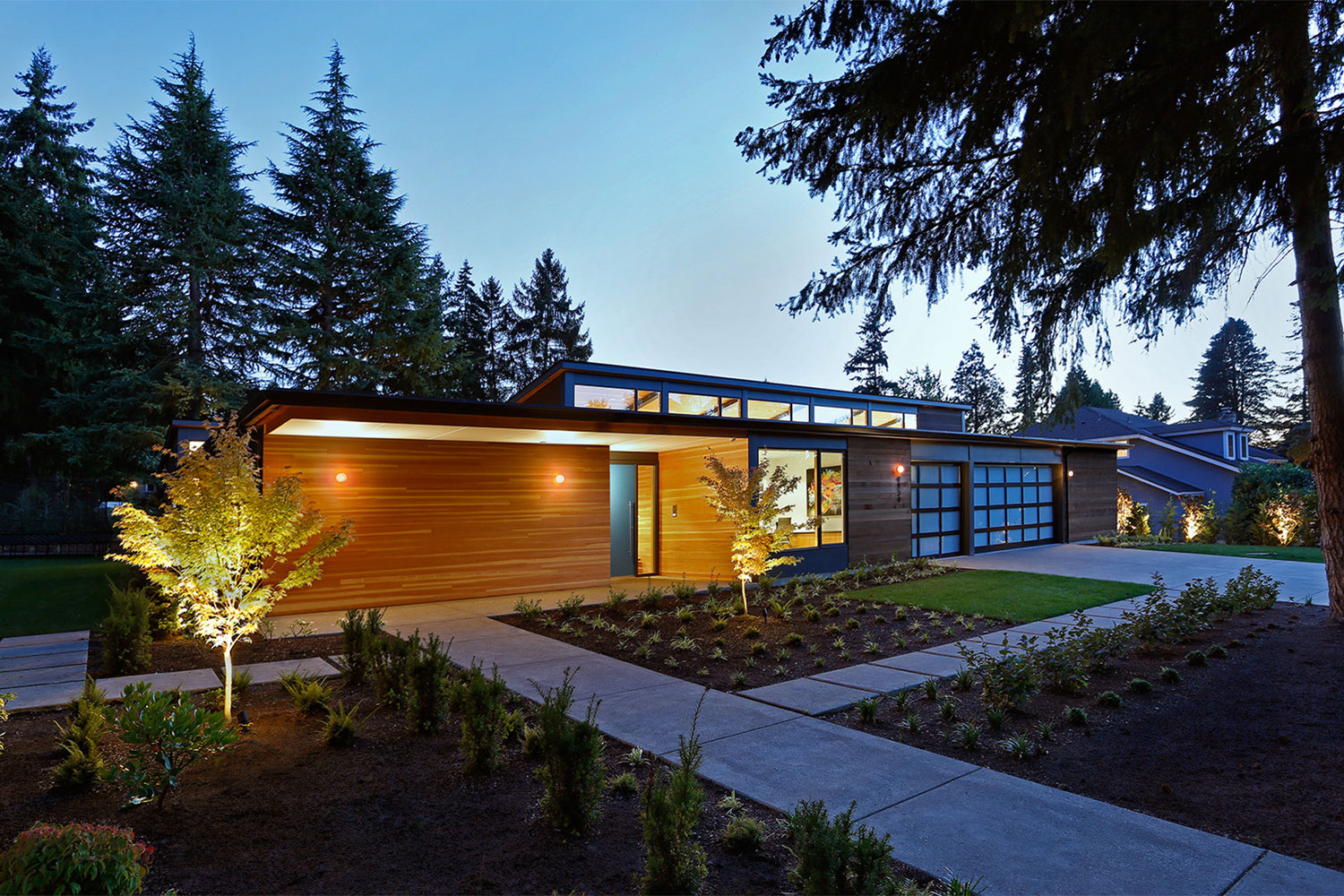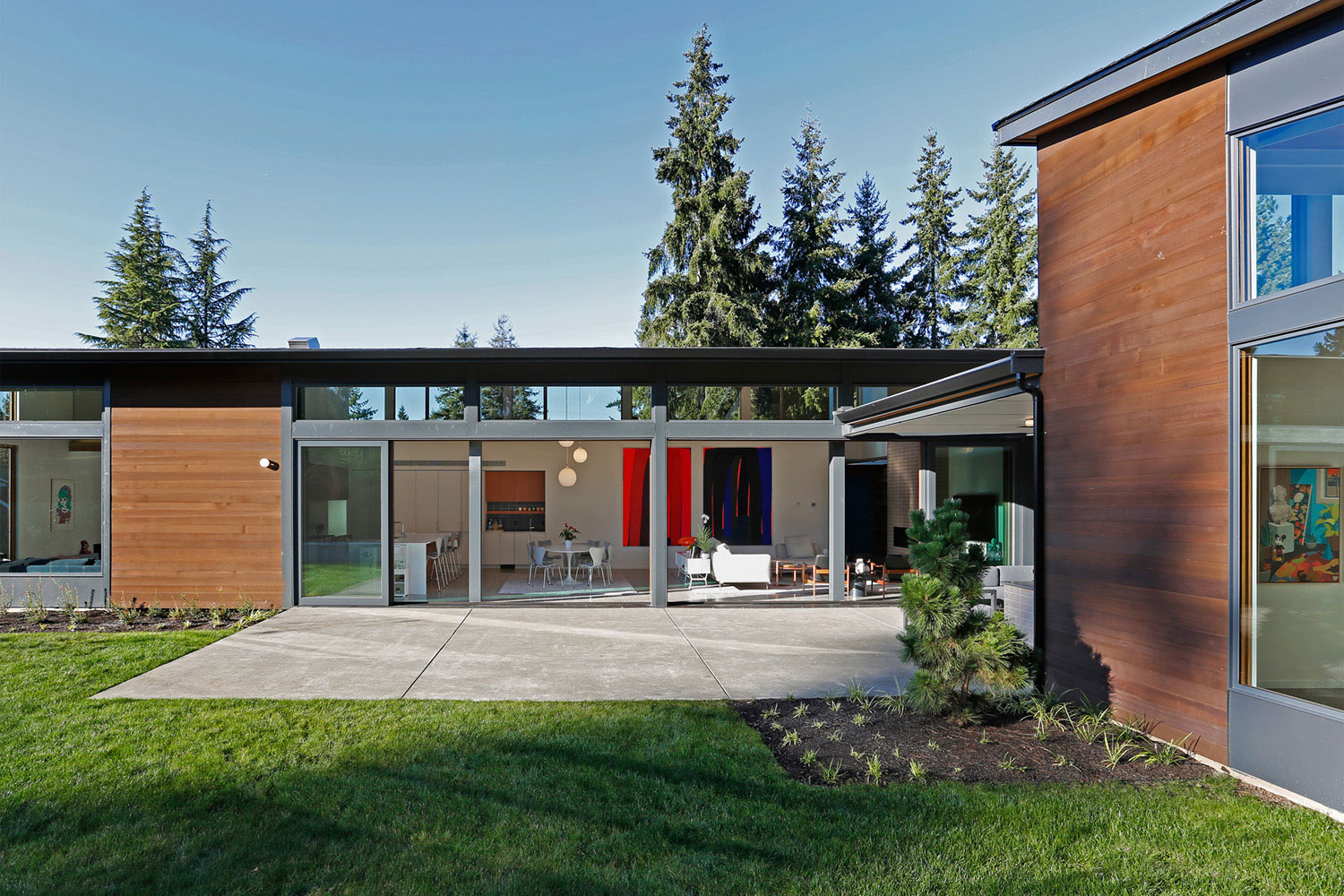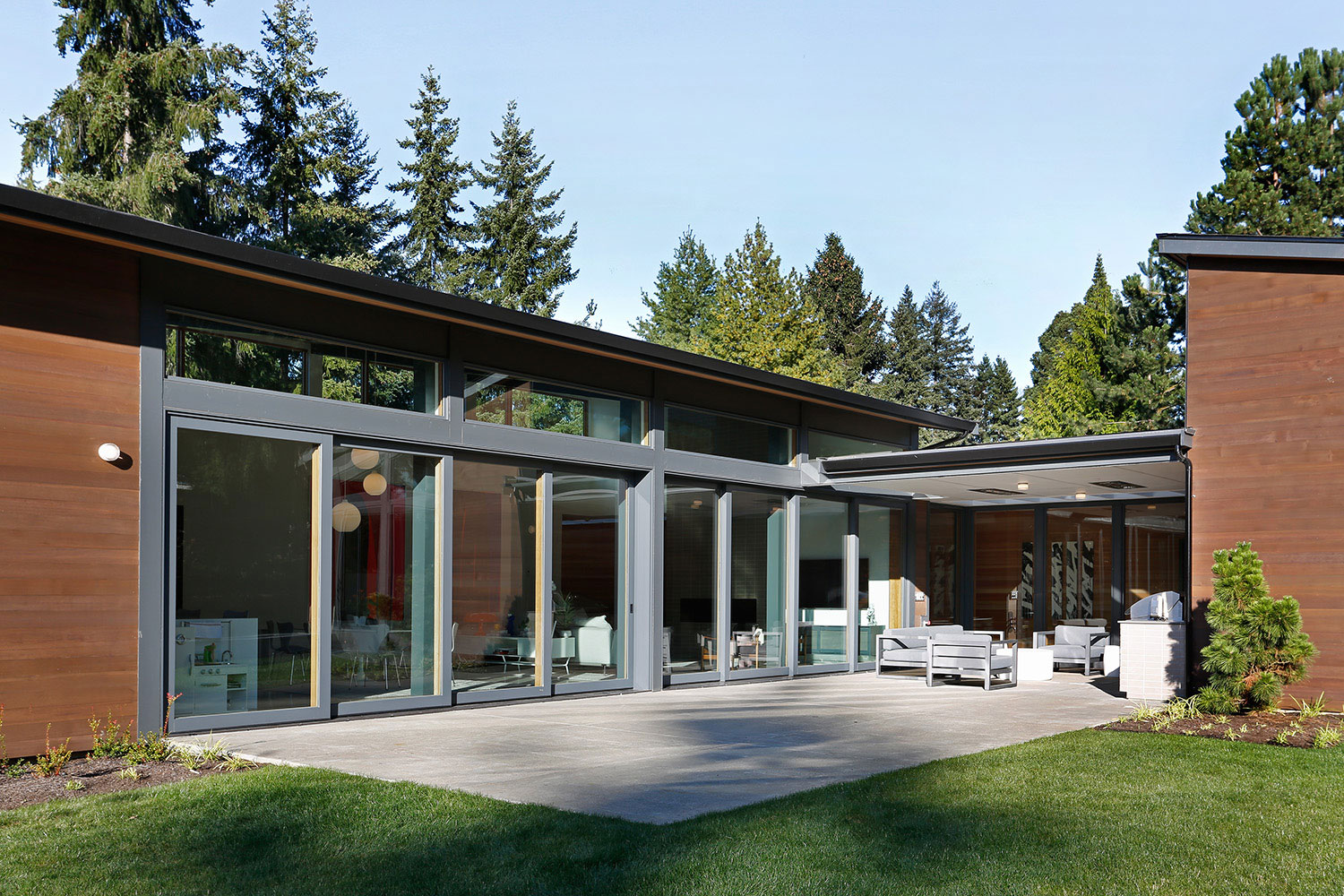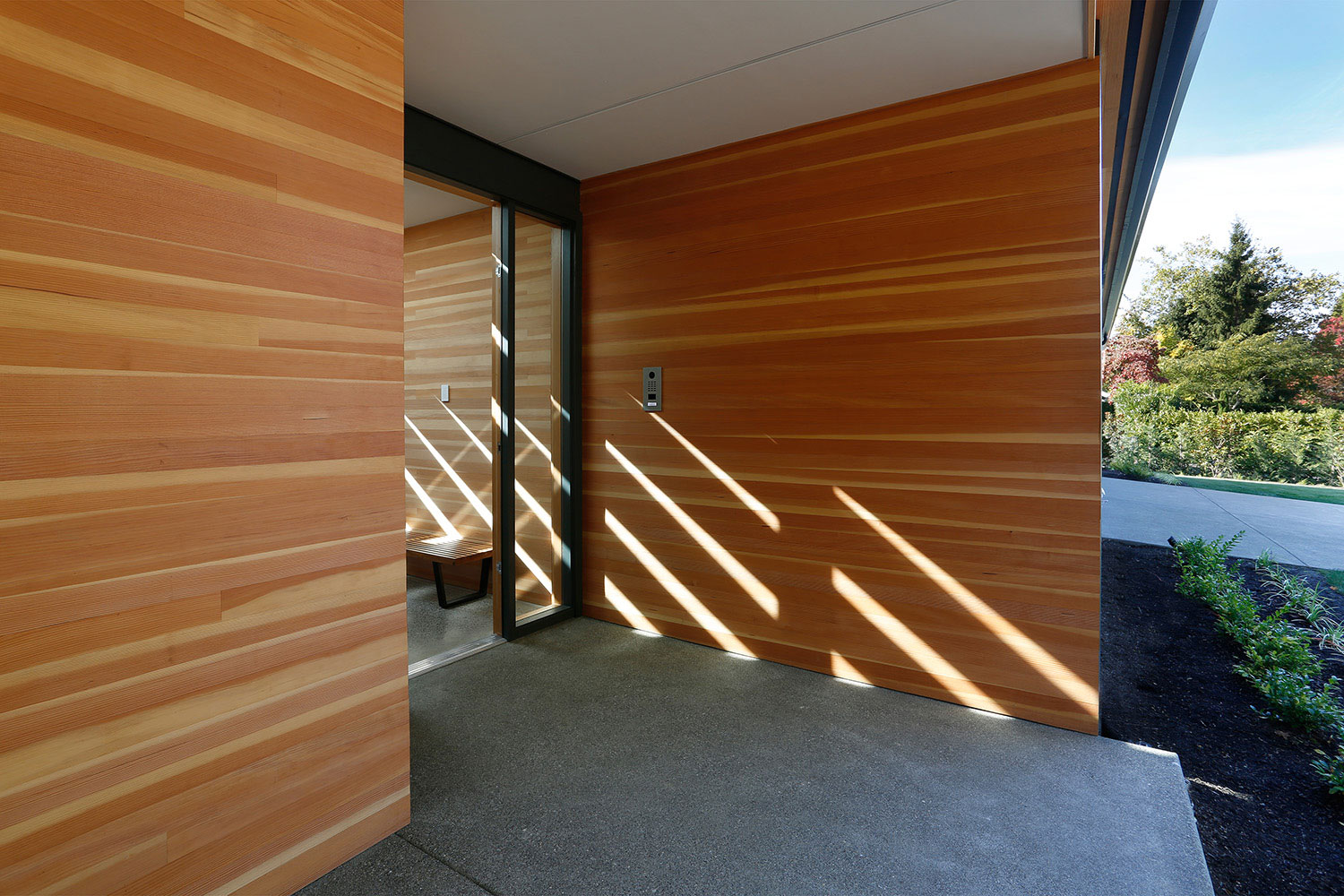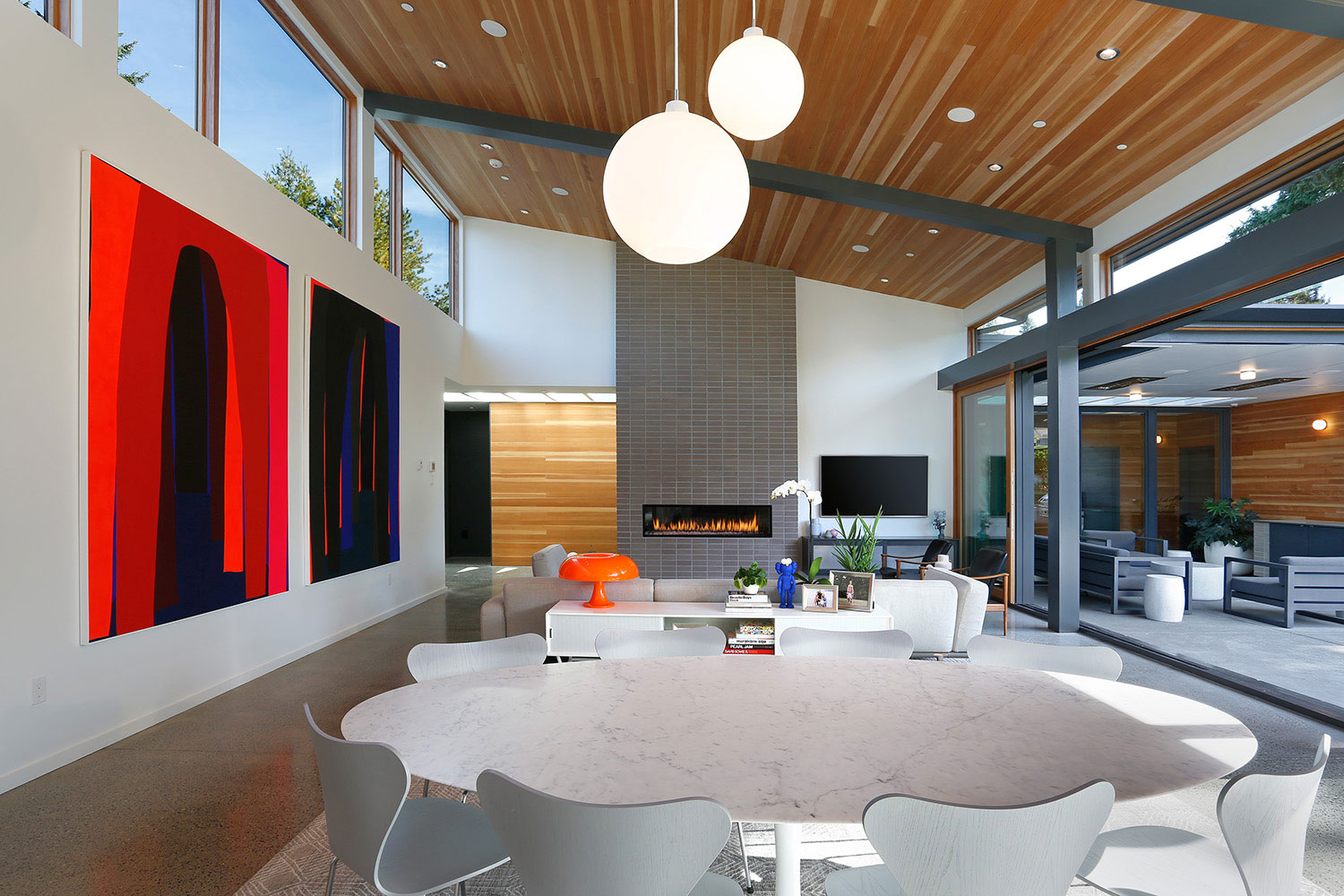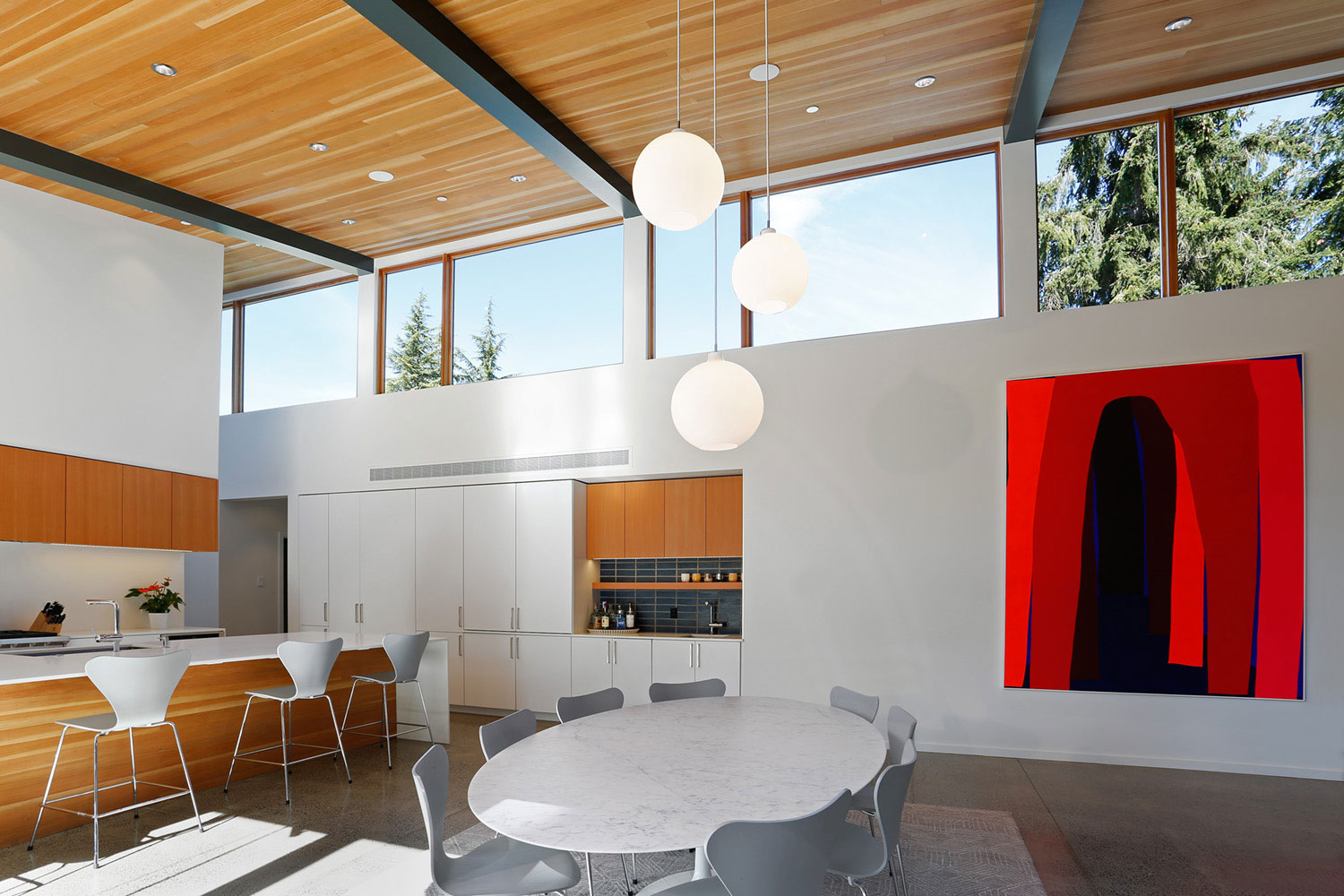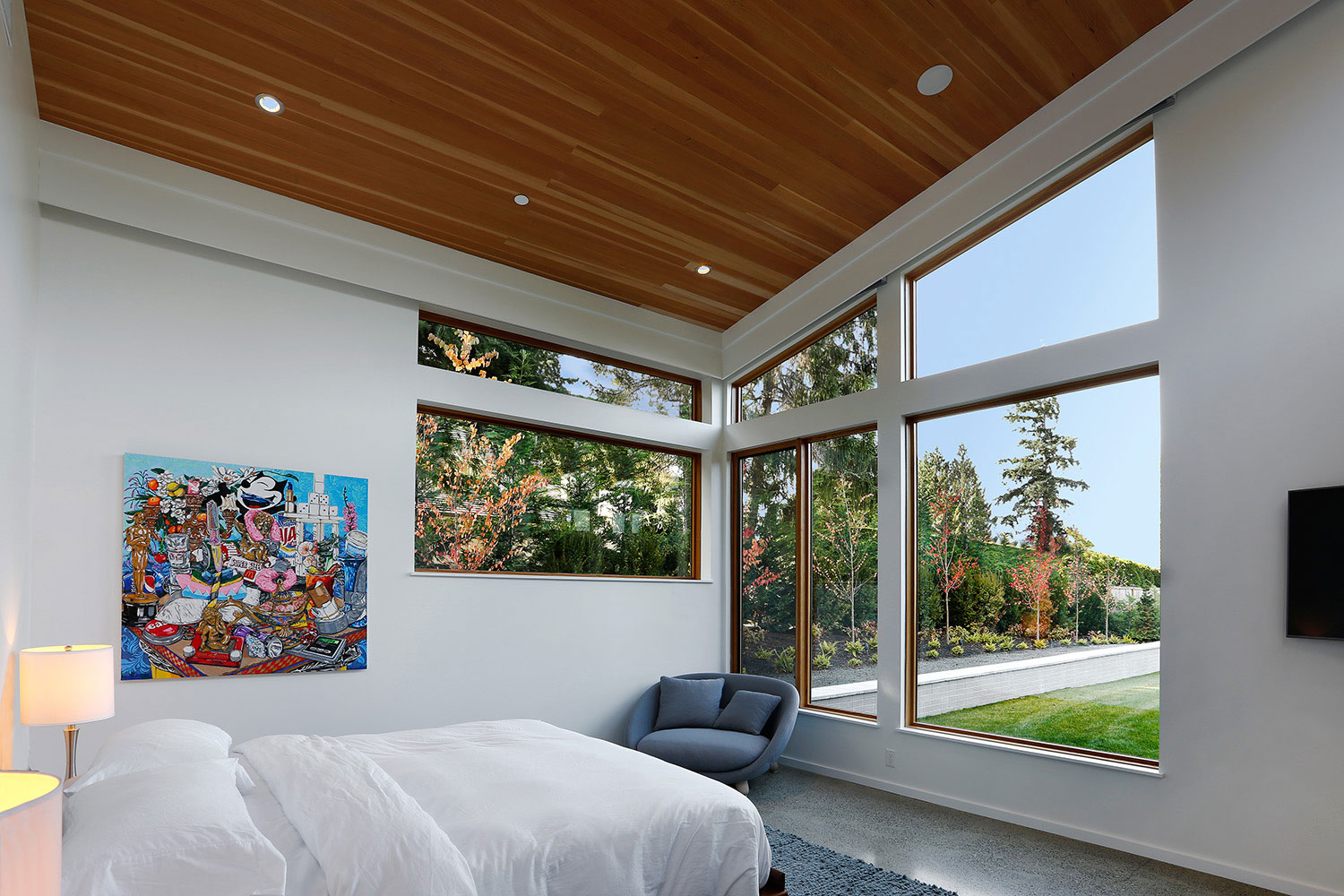The Mid-Century Modern revival movement of the last decade is slowly evolving into a new look. While we may be seeing less Barcelona chairs in living rooms, the principles of the classic design style are still being implemented, just in a more contemporary way. The blending of old and new in everything from the architectural lines of homes to the materials used throughout has resulted in a new twist to the timeless look of the 1950s and ‘60s. One Seattle architect has created a home that is a “modern” take on modern that is both timeless and innovative. Check out Clyde Hill House — a stylish, light-filled blend of old and new.
The idea for a contemporary home built on mid-century modern principles came from the clients themselves. Wanting a space that offered privacy but plenty of natural light, the clients provided architect Paul Michael Davis with a perfect starting point for the design of their home. A challenging sloped site, with streets and driveways on three sides, the land itself helped to define the direction of the build. The Mid-Century Modern movement was the beginning of homes that were open and filled with natural light while still offering privacy for the folks inside. The fact that the property also sloped down toward the back lended itself to creating a private front half and an open back half.
Davis devised a plan which met the clients’ top priorities through an elegant design and clever solutions. Starting with the challenge of the sloped land, Davis used this to his advantage and sunk the front of the home into the ground. From the street, the home appears to be a quaint, one-level ranch similar to the classic Eichlers of Palm Springs, California. But the land hides the fact that the front of the home is below ground level and that the “low” roof becomes the top of a double-height vaulted ceiling at the back. From there, Clyde Hill House spreads back into the property, forming an L-shape that offers further privacy from nosy neighbors. By placing the garage at the front of the home and pushing the master bedroom and family room to the back, the rooms that require privacy face away from the surrounding streets and driveways.
With the positioning and layout of the home checking the first item off of the wish list, Davis focused on the next issue at hand — filling each room with natural light. Again, classic mid-century modern principles came into play. The L-shape of the home created an enclosed backyard and for the rooms that face it — the open-plan family room, playroom, and master bedroom — this privacy meant the rooms could be decked out with large windows and walls of glass. The vaulted ceiling allowed for a row of clerestory windows to be installed on the street-facing side of the home, letting in sunlight throughout the day.
While Clyde Hill House takes much of its inspiration from mid-century modern principles and architectural elements, there is a blend of materials that feels fresh and contemporary. While the garage doors have a slightly industrial feel, the wood cladding on the exterior which continues throughout the interior of the home is an updated twist on the classic wood paneling of years gone by, and the crisp white minimalist kitchen is very forward thinking.
Everywhere you look throughout Clyde Hill House you can see this “modern” take on modern design. Tile in the bathroom is laid in classic stack bond pattern but continues outside to clad the exterior courtyard, creating a clever continuity between the indoor and outdoor spaces. The striking bright blue color is a contemporary choice. Davis gets away from the traditionally muted tones of mid-century modern design to add pops of color throughout the home. Neutral walls let the home act as a way for the owners to show off their extensive art collection. Meanwhile in the entryway, the classic travertine floor and oversized entry door are balanced by a minimalist teak bench.
Often with the mid-century revival movement, we’ve seen designs go too far into the past, with every last element referencing the classic style. With Clyde Hill House, Davis was able to balance old and new, to achieve a design that is cutting edge with enough classic elements to make this a timeless space.
